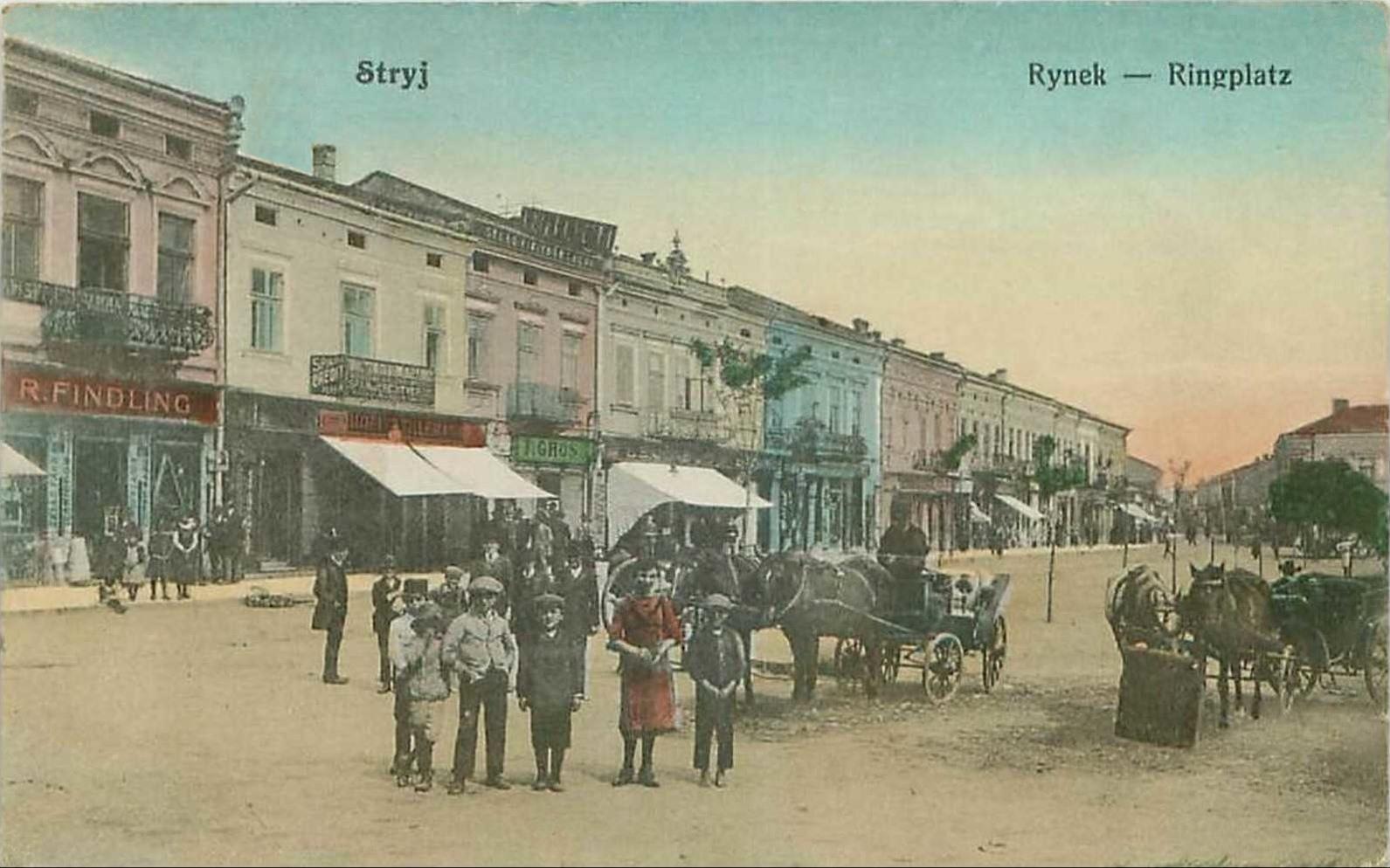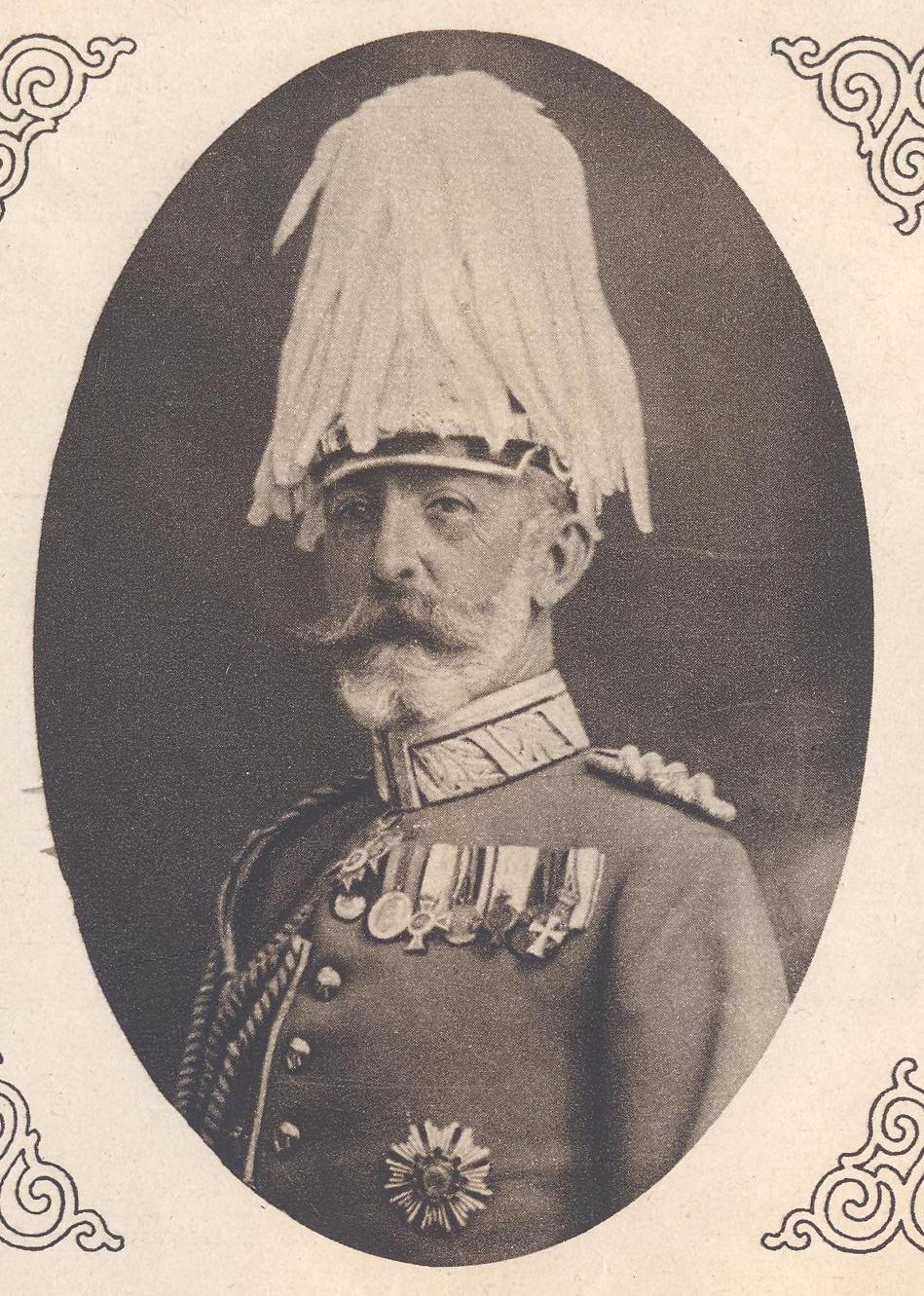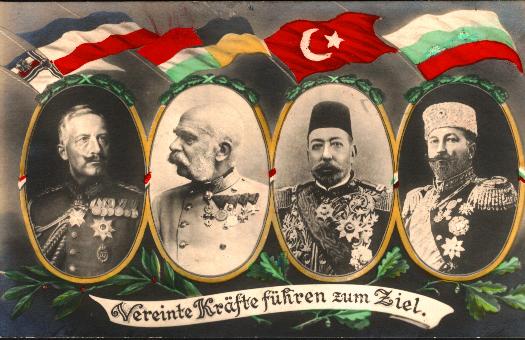|
Zwinin
The Zwinin ( uk, Джвинув or ''Dschwynuw''; pl, Dżwinów) is a mountain a few kilometers south of Stryi, Ukraine, in the Outer Eastern Carpathians. The peak is 1107 meters above sea level and the ridge is 10 kilometers long. Together with the River Stryi, the mountain is part of a national park called “natsional'ny park Skolivs'ki Beskydy” (National Park of the Skole Beskids). In World War I a battleDominik Richert: ''The Kaiser's Reluctant Conscript. My experiences in the War 1914-1918.'' Translated by D.C. Sutherland, Pen & Sword 2012 page 59 took place from 5 February – 9 April 1915. The South-East-Army of the Central Powers took the Zwinin under the leadership of Felix Graf von Bothmer Felix Ludwig Graf von Bothmer (10 December 1852 – 18 March 1937) was a German general from Bavaria. He notably served in the Brusilov offensive of World War I. Military Career and After In 1871 Bothmer joined the Bavarian Army. He spent most .... References Im ... [...More Info...] [...Related Items...] OR: [Wikipedia] [Google] [Baidu] |
Stryi
Stryi ( uk, Стрий, ; pl, Stryj) is a city located on the left bank of the river Stryi in Lviv Oblast (region) of western Ukraine 65 km to the south of Lviv (in the foothills of the Carpathian Mountains). It serves as the administrative center of Stryi Raion (district). Stryi hosts the administration of Stryi urban hromada, one of the hromadas of Ukraine. Its population is approximately . Stryi is considered to be the first city in Ukraine to bear the blue-over-yellow Ukrainian national flag when it was hoisted on the flagpole of the Town Hall on March 14, 1990, even before the fall of the Soviet Union in December 1991. Population Name The city takes its name from the name of the river Stryi, one of the tributaries of the Dniester. Stryi, as a name of river is a very old name and means "stream". Its etymology stems from an Indo-European root *sreu. Words that have the same root can be found in modern Ukrainian - струм, струя, Polish - ''struga'', ''strumie� ... [...More Info...] [...Related Items...] OR: [Wikipedia] [Google] [Baidu] |
Skole Beskids
The Skole Beskids ( uk, Сколівські Бескиди; pl, Beskidy Skolskie) is a mountain range in western Ukraine, belonging to the set of ranges called the Eastern Beskids, within the Outer Eastern Carpathians. The mountains are composed primary of Carpathian flysch. The northern section of the range is the location of the Skole Beskids National Nature Park, established in 1999; within the park is the highest peak in the range, Mount Parashka, at 1268 meters. Zwinin Mountain, at 992 meters above sea level, is also located within the park. The Skole Beskids is also the site of the sandstone fortresses of Tustan', built between the 9th century and 13th century, now a State Historical and Cultural Reserve. It's near the town of Boryslav. See also References Sources * Gallery File:Skole Beskids. View of the village Plav'ye.JPG, Skole Beskids. View of the village Plavie. File:Skole Beskids. Mountain road..JPG, Skole Beskids. Klymets Natural Preserve, Droho ... [...More Info...] [...Related Items...] OR: [Wikipedia] [Google] [Baidu] |
Felix Graf Von Bothmer
Felix Ludwig Graf von Bothmer (10 December 1852 – 18 March 1937) was a German general from Bavaria. He notably served in the Brusilov offensive of World War I. Military Career and After In 1871 Bothmer joined the Bavarian Army. He spent most of the following forty years serving in the Bavarian War Ministry or on the Royal Bavarian Army General Staff, with stints of line duty and three years in Berlin with the Prussian General Staff. Rising through the ranks; in 1910 he was promoted to ''General der Infanterie''. Before World War I Bothmer fractured a leg which rendered him unfit for field duty, resulting in him having to wait for a command until December. On 30 November 1914 he was appointed to command the 6th Bavarian Reserve Division at Ypres. On 22 March 1915 he was given the command of Corps Bothmer, a unit raised to help defend the passes of the Carpathian Mountains against Russian attacks that directly threatened Hungary. He won the Battle of Zwinin which took place ... [...More Info...] [...Related Items...] OR: [Wikipedia] [Google] [Baidu] |
Carpathian Mountains
The Carpathian Mountains or Carpathians () are a range of mountains forming an arc across Central Europe. Roughly long, it is the third-longest European mountain range after the Urals at and the Scandinavian Mountains at . The range stretches from the far eastern Czech Republic (3%) and Austria (1%) in the northwest through Slovakia (21%), Poland (10%), Ukraine (10%), Romania (50%) to Serbia (5%) in the south. "The Carpathians" European Travel Commission, in The Official Travel Portal of Europe, Retrieved 15 November 2016 The Carpathian ... [...More Info...] [...Related Items...] OR: [Wikipedia] [Google] [Baidu] |
Mountain
A mountain is an elevated portion of the Earth's crust, generally with steep sides that show significant exposed bedrock. Although definitions vary, a mountain may differ from a plateau in having a limited Summit (topography), summit area, and is usually higher than a hill, typically rising at least 300 metres (1,000 feet) above the surrounding land. A few mountains are Monadnock, isolated summits, but most occur in mountain ranges. Mountain formation, Mountains are formed through Tectonic plate, tectonic forces, erosion, or volcanism, which act on time scales of up to tens of millions of years. Once mountain building ceases, mountains are slowly leveled through the action of weathering, through Slump (geology), slumping and other forms of mass wasting, as well as through erosion by rivers and glaciers. High elevations on mountains produce Alpine climate, colder climates than at sea level at similar latitude. These colder climates strongly affect the Montane ecosystems, ecosys ... [...More Info...] [...Related Items...] OR: [Wikipedia] [Google] [Baidu] |
Ukraine
Ukraine ( uk, Україна, Ukraïna, ) is a country in Eastern Europe. It is the second-largest European country after Russia, which it borders to the east and northeast. Ukraine covers approximately . Prior to the ongoing Russian invasion, it was the eighth-most populous country in Europe, with a population of around 41 million people. It is also bordered by Belarus to the north; by Poland, Slovakia, and Hungary to the west; and by Romania and Moldova to the southwest; with a coastline along the Black Sea and the Sea of Azov to the south and southeast. Kyiv is the nation's capital and largest city. Ukraine's state language is Ukrainian; Russian is also widely spoken, especially in the east and south. During the Middle Ages, Ukraine was the site of early Slavic expansion and the area later became a key centre of East Slavic culture under the state of Kievan Rus', which emerged in the 9th century. The state eventually disintegrated into rival regional po ... [...More Info...] [...Related Items...] OR: [Wikipedia] [Google] [Baidu] |
Outer Eastern Carpathians
Divisions of the Carpathians are a categorization of the Carpathian mountains system. Below is a detailed overview of the major subdivisions and ranges of the Carpathian Mountains. The Carpathians are a "subsystem" of a bigger Alps-Himalaya System that stretches from western Europe all the way to southern Asia, and are further divided into "provinces" and "subprovinces". The last level of the division, i.e. the actual mountain ranges and basins, is usually classified as "units". The main divisions are shown in the map on the right. To generalize, there are three major provinces (regions): Western Carpathians, Eastern Carpathians, and the Southern Carpathians. Naming conventions The division is largely (with many exceptions) undisputed at the lowest level (except for the Ukrainian part), but various divisions are given for the higher levels, especially for the penultimate level. A geomorphological division has been used as much as the data was available; other new physiogeo ... [...More Info...] [...Related Items...] OR: [Wikipedia] [Google] [Baidu] |
River Stryi
The Stryi River ( uk, Стрий) starts in the Carpathian mountains in western Ukraine. It snakes through the mountains running for 231 km (144 miles). After 193 km it passes Stryi. The river continues for another 32 km before joining the Dniester near Khodoriv. Route The river starts in a catchment area above and in the foothills of the Eastern Beskids range of the Carpathian mountains close to the village of Mokhnate, flowing down the East facing flank of the range. From here it begins to grow, being joined by many tributaries on its way North, before flowing into a series of twists and turns through gorges. It exits the hills reaching a flat area around Turka, where there was an attempt at hydro electric generation and flood control. The river meanders through the hills to Pidhorodci where it meets another main tributary the Opir at Nyzhnye Synievydne. From here it begins to straighten, 3.5 km south east of the town, at the start of the Stryi valley ... [...More Info...] [...Related Items...] OR: [Wikipedia] [Google] [Baidu] |
National Park
A national park is a nature park, natural park in use for conservation (ethic), conservation purposes, created and protected by national governments. Often it is a reserve of natural, semi-natural, or developed land that a sovereign state declares or owns. Although individual nations designate their own national parks differently, there is a common idea: the conservation of 'wild nature' for posterity and as a symbol of national pride. The United States established the first "public park or pleasuring-ground for the benefit and enjoyment of the people", Yellowstone National Park, in 1872. Although Yellowstone was not officially termed a "national park" in its establishing law, it was always termed such in practice and is widely held to be the first and oldest national park in the world. However, the Tobago Main Ridge Forest Reserve (in what is now Trinidad and Tobago; established in 1776), and the area surrounding Bogd Khan Mountain, Bogd Khan Uul Mountain (Mongolia, 1778), wh ... [...More Info...] [...Related Items...] OR: [Wikipedia] [Google] [Baidu] |
World War I
World War I (28 July 1914 11 November 1918), often abbreviated as WWI, was one of the deadliest global conflicts in history. Belligerents included much of Europe, the Russian Empire, the United States, and the Ottoman Empire, with fighting occurring throughout Europe, the Middle East, Africa, the Pacific, and parts of Asia. An estimated 9 million soldiers were killed in combat, plus another 23 million wounded, while 5 million civilians died as a result of military action, hunger, and disease. Millions more died in genocides within the Ottoman Empire and in the 1918 influenza pandemic, which was exacerbated by the movement of combatants during the war. Prior to 1914, the European great powers were divided between the Triple Entente (comprising France, Russia, and Britain) and the Triple Alliance (containing Germany, Austria-Hungary, and Italy). Tensions in the Balkans came to a head on 28 June 1914, following the assassination of Archduke Franz Ferdin ... [...More Info...] [...Related Items...] OR: [Wikipedia] [Google] [Baidu] |
Central Powers
The Central Powers, also known as the Central Empires,german: Mittelmächte; hu, Központi hatalmak; tr, İttifak Devletleri / ; bg, Централни сили, translit=Tsentralni sili was one of the two main coalitions that fought in World War I (1914–1918). It consisted of the German Empire, Austria-Hungary, the Ottoman Empire, and the Kingdom of Bulgaria and was also known as the Quadruple Alliance.german: Vierbund, tr, Dörtlü İttifak, hu, Központi hatalmak, bg, Четворен съюз, translit=Chetvoren sūyuz Colonies of these countries also fought on the Central Powers' side such as German New Guinea and German East Africa, until almost all of their colonies were occupied by the Allies. The Central Powers faced and were defeated by the Allied Powers that had formed around the Triple Entente. The Central Powers' origin was the alliance of Germany and Austria-Hungary in 1879. Despite having nominally joined the Triple Alliance before, Italy d ... [...More Info...] [...Related Items...] OR: [Wikipedia] [Google] [Baidu] |
Mountains Of The Eastern Carpathians
A mountain is an elevated portion of the Earth's crust, generally with steep sides that show significant exposed bedrock. Although definitions vary, a mountain may differ from a plateau in having a limited summit area, and is usually higher than a hill, typically rising at least 300 metres (1,000 feet) above the surrounding land. A few mountains are isolated summits, but most occur in mountain ranges. Mountains are formed through tectonic forces, erosion, or volcanism, which act on time scales of up to tens of millions of years. Once mountain building ceases, mountains are slowly leveled through the action of weathering, through slumping and other forms of mass wasting, as well as through erosion by rivers and glaciers. High elevations on mountains produce colder climates than at sea level at similar latitude. These colder climates strongly affect the ecosystems of mountains: different elevations have different plants and animals. Because of the less hospitable terrain ... [...More Info...] [...Related Items...] OR: [Wikipedia] [Google] [Baidu] |




.jpg)
